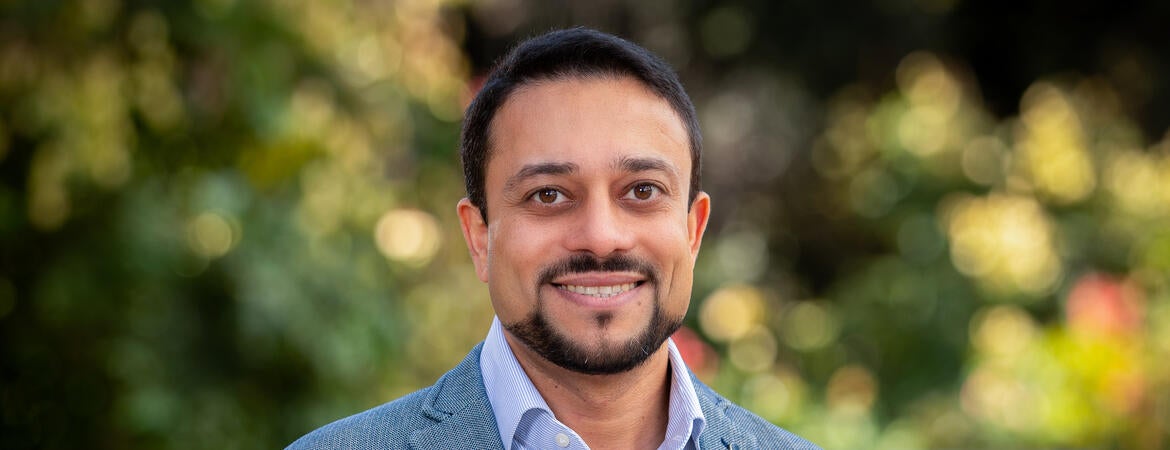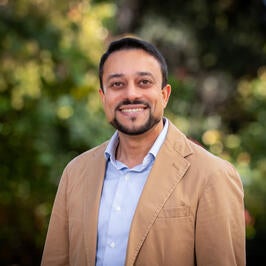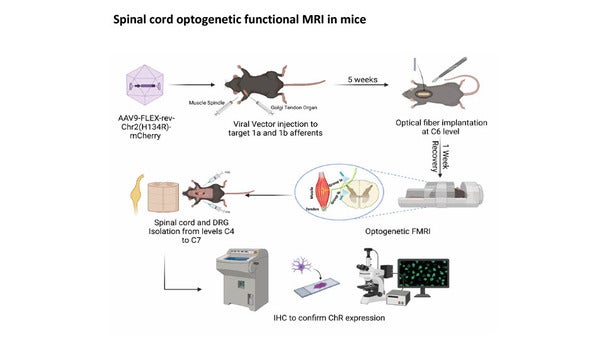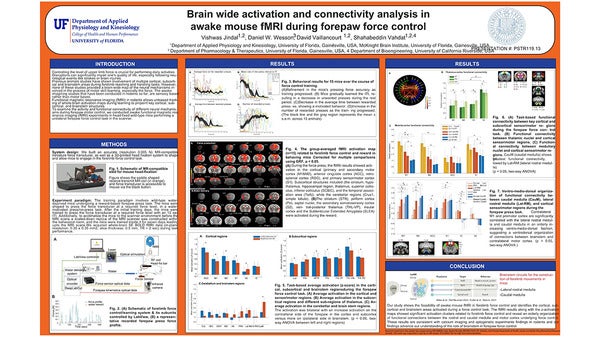
As a child, Shahab Vahdat was drawn to science — inspired by his mother, an elementary school teacher who prized science and discovery.

Today, Vahdat is an assistant professor at the Marlan and Rosemary Bourns College of Engineering’s (BCOE) Department of Bioengineering, where he works to develop cutting-edge treatments for people who have suffered ischemic strokes.
“I trained as an electrical engineer with a minor in control systems,” Vahdat said, “but I soon realized the brain is the most sophisticated controller I’ve ever encountered.”
That revelation led him to study the neural aspects of motor skill learning, from playing the guitar to catching a baseball, and then “to explore how neural control of movement is altered when parts of the brain are damaged, for example, by stroke.”
His research at BCOE involves two components: improving diagnosis and prognosis, to better understand how ischemic stroke changes patient function, and developing new treatments that stimulate the brain post-stroke, for better performance and recovery.
“Our main goal is to come up with a treatment that has the potential to be FDA [Food and Drug Administration]-approved and help patients,” he said.
***
Millions of people would benefit from such a therapy. Ischemic strokes, caused by clots that starve the brain of blood and oxygen, account for 87 percent of the 795,000 strokes in the United States each year.
“Everybody has someone in the family — or has heard of, or knows somebody — who has been affected by stroke,” Vahdat said.
And yet, due to the complexity of ischemic-stroke-related damage in humans, physicians have few tools to help patients recover lost sensory-motor function, especially in their hands and fingers.
“We’re moving at a very fast pace to change that,” Vahdat said.
***

In his Stroke NeuroRecovery Lab at BCOE, Vahdat primarily explores neurostimulation-based ischemic stroke treatments through testing in mice and diagnostics in humans.
The goal is to use stimulation, via wireless devices, to prime neural circuits and restore the precise hand movements required for everyday tasks, whether it’s brushing teeth, fastening buttons, or writing with a pen.
“Basically, we want to change a patient’s brain communication to get the best out of the (brain) areas spared in a stroke,” Vahdat said.
Surgeons would implant, deep in the brain, one or two electrodes, each the diameter of a grain of sand — similar to the hardware used to treat afflictions such as Parkinson’s disease. The devices would then activate the same neurocircuit repeatedly to induce long-term change.
“It can be as short as a few minutes a day,” Vahdat said. “In rodent models, we usually do it on the order of hundreds or thousands of times. They cannot go back to before the stroke, but, considering this loss, we ask, ‘What is the optimal mental arrangement or communication across brain areas?’”
***
Vahdat’s greatest challenge is developing therapeutic strategies that can be customized for each patient, given how unique every brain is.
Therefore, he spent a decade pioneering novel functional magnetic resonance imaging (MRI) tools that “enable comprehensive assessment of functional changes across the entire brain-spinal cord axis in stroke patients,” Vahdat said.
Such insights, in turn, inform his research into neurostimulation and other cutting-edge stroke care. In his lab, graduate students, undergraduate research assistants, and clinicians assist with experiments while Vahdat coordinates with other experts at BCOE and in Florida, Japan, France, and Canada in biomaterials, computer science, neurology, and physical therapy.
***
Vahdat grew up in large southern and central cities in Iran, before moving to Tehran. Each of these highly diverse cultures helped equip him for a career of collaborative inquiry.
“I met such a variety of people,” he said. “It helped with being open to new ideas.”

Although his father was an engineer, it was mostly his mother, Maryam, who helped shape Vahdat’s path by prodding him to pursue his passion.
“In middle school, I first discovered an emerging field that blends medicine and engineering, called biomedical engineering, and it felt wonderfully adventurous to me,” he said.
Vahdat followed that path of curiosity and, years later, found the heart of his passion: the science of the brain. Ultimately, “I wanted to use engineering to answer important questions,” he said.
His road to BCOE, which he joined in 2024, ran through Tehran, where he earned bachelor’s and master’s degrees; Montreal, where he earned a Ph.D. and did postdoctoral work; Stanford University, where he completed more postdoctoral work; and the University of Florida, where he spent five years as an assistant professor in its Department of Applied Physiology and Kinesiology.
Outside of the lab, Vahdat said he likes playing chess, tending to his indoor plants (“when they survive”), cooking, cycling, and hiking with his daughter. A few years ago, he learned to make Persian dishes such as tahchin (a saffron, chicken, and rice dish) and ghormeh sabzi, an herb stew.
***
Thanks to his research and that of others’, ischemic stroke victims will lead better lives.
“Today’s treatment landscape is far more promising than it was 20 years ago,” Vahdat said. “A number of cutting-edge neurotreatments are on the horizon — and when these are combined with a tailored rehabilitation program, they can significantly boost your chances of meaningful recovery.”
Header: Department of Bioengineering assistant professor Shahab Vahdat works to develop cutting-edge treatments for people who have suffered ischemic strokes.